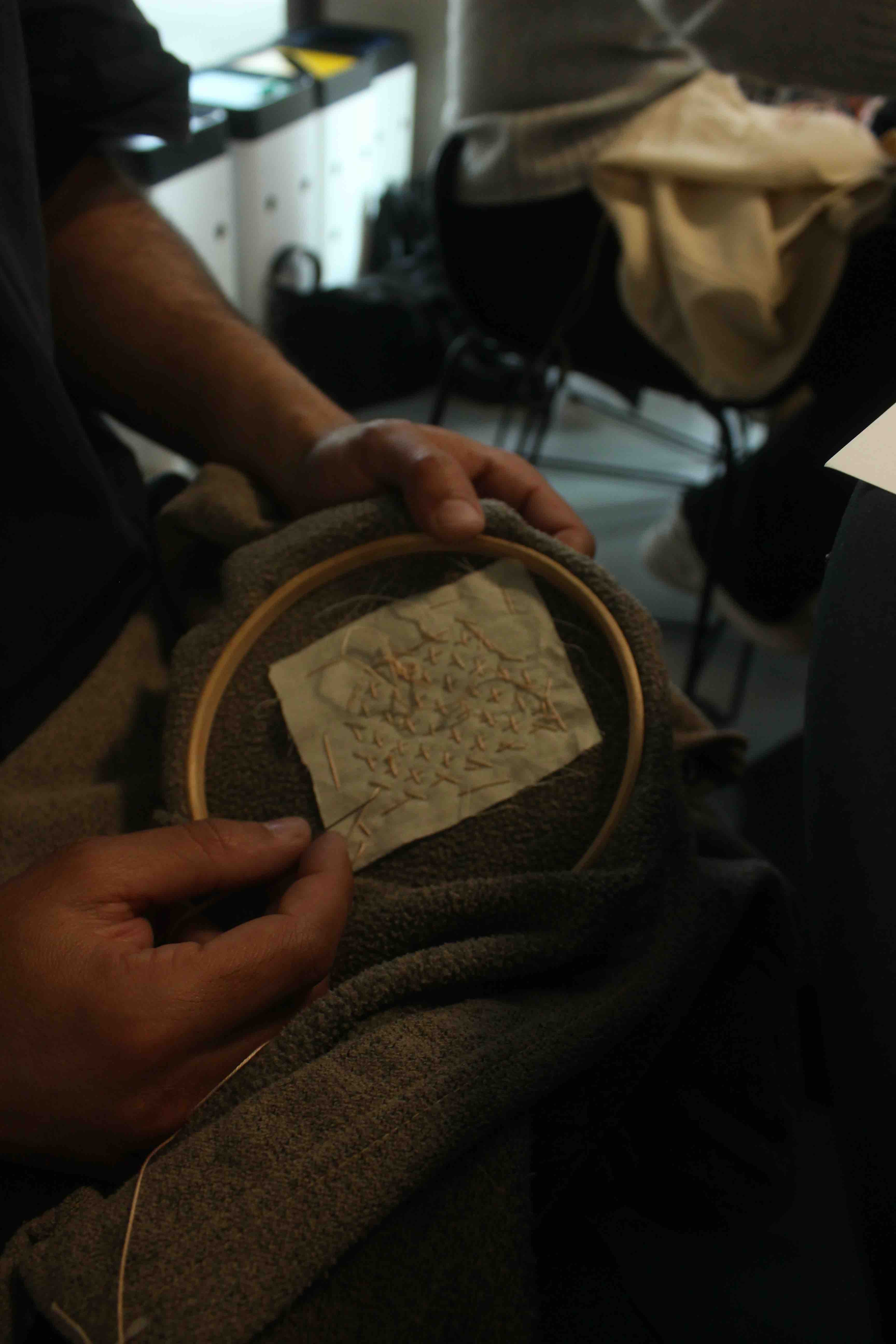Workshop Sashiko
Milan Gillard & Annelies Clerix
An enclave in a hallway - a passage between classrooms, workspaces and the green outside of PXL - a break from the destination to grab a tea or coffee, that is the scenography where the sashiko workshop was hosted by Annelies Clerix. A small space of domestic hospitality in a work environment. A domestic activity as a break.
Sashiko is an act of slow repair. This ancient Japanese technique transforms the reparation process into a decorative and visible gesture. A neatly designed geometrical pattern is embroidered on the broken cloth and simultaneously reinforced by a fabric patch. It is a valorization of old and broken clothes. This is very apparent by the fact that white cotton thread serves as the drawing for the indigo dyed textile background - a contrast.
We joined all together around the tables. Everyone armed with a loved but broken piece of clothing, a needle, thread and a question. Making something collectively creates dialogue. Thus we incited this dialogue with critical reflection.
Bring me back to a moment you grieved about a broken item?
Bring me back to a moment where somebody restored something for you?
How could you appropriate a maintenance mentality?
Each of the questions were linked to a sashiko pattern, when a stitch pattern was sewn we talked about the corresponding question. These questions linked to the valorization of mending. Luckily the opinions of the participants differed between each other.
But what is the economic and practical value of this technique? Why wouldn’t we replace a simple T-shirt by a new one? Why would it create an added value?
Indeed Sashiko is a slow and labour intensive process. In an era where pieces of clothes are easily replaced there is not really a necessity of repairing. Except from an ecological point of view.
One of the participants mentioned that the technique is too time consuming for them. They felt that they have two types of energy where they have patience for. One is restoring, the other creating. They made the comparison with bookbinding - the process of creating a book by themselves. A slow paced technique. They had the feeling that while restoring there is a lack of satisfaction whereas creating gives a bigger feeling of fulfillment.
Other participants were relieved that their favorite item of clothing with sentimental value was as good as new. There were even people that used the patterns as simple embroidering decorations to make i.e. a tote bag of PXL something uniquely made for themselves.
